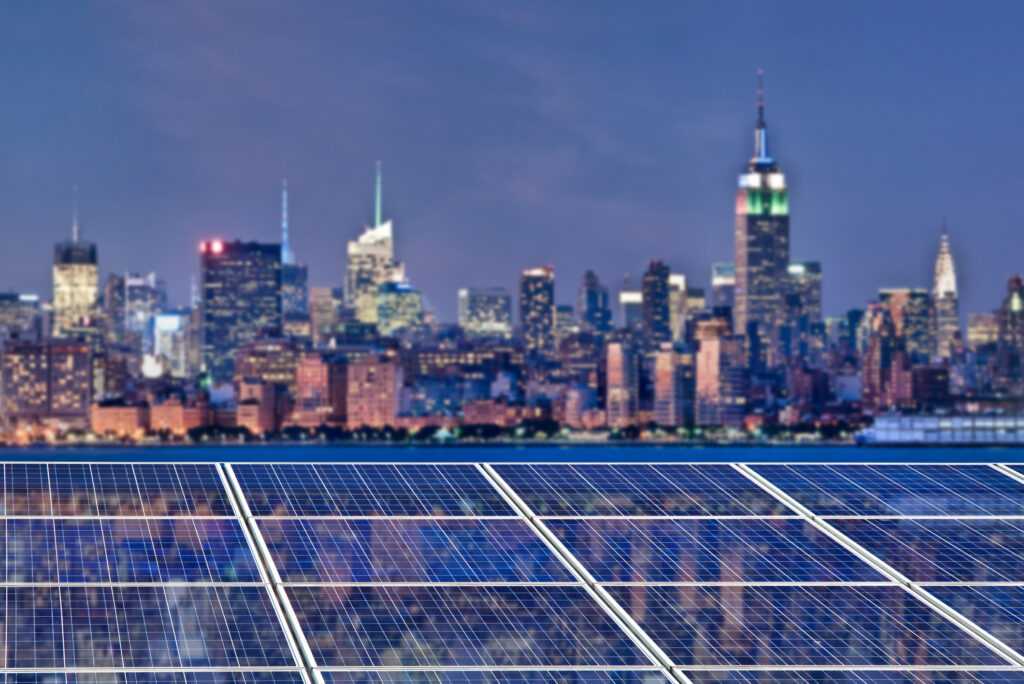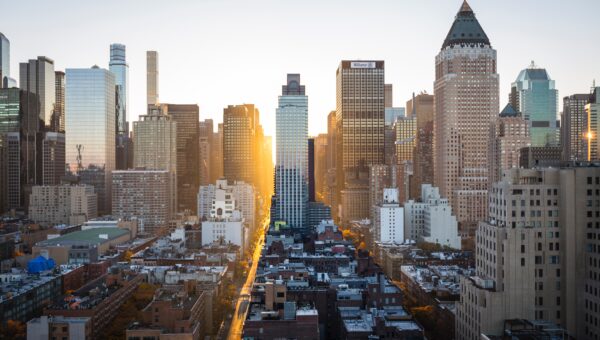
Pushing New York’s Climate Goals Forward in the Face of COVID-19

Written by Rich Kassel, Group Leader, Energy, Environment + Sustainability, Capalino
With New York’s COVID-19 crisis increasing in intensity by the hour, it can be hard to think about long-term climate and clean energy priorities. Major kudos to Governor Cuomo, Senate Majority Leader Andrea Stewart-Cousins, Assembly Speaker Carl Heastie, and the state’s legislators for adopting a budget on April 2 that continues the State’s leadership on, and commitment to, meeting its long-term climate and clean energy goals in ways that will create and maintain jobs in New York when today’s public health crisis has abated.
Including the Accelerated Renewable Energy Growth and Community Benefit Act in the budget will help New York meet its goal of ensuring that 70 percent of our electricity comes from renewable sources by 2030. This nation’s-best goal was codified by last year’s passage of the Climate Leadership and Community Protection Act (CLCPA). (The environment was a big winner in this year’s budget, which also included a $3 billion “Restore Mother Nature” environmental bond act, a fully-funded $300 million Environmental Protection Fund, $500 million for clean water infrastructure investments, a codification of the previous ban on hyrdofracking, a ban on disposable Styrofoam, and the legalization of e-bikes and e-scooters.)
Taking steps to meet the CLCPA’s goals in the budget is good economic development and job policy. According to NYSERDA, the State’s clean energy sector already employs almost 160,000 people. With clean energy jobs growing at 8.9% annually since 2016, the sector’s annual job growth rate has been more than 2.5 times the State’s overall job growth rate since then.
So, how will the new budget help the renewable energy sector?
First, the budget includes a new process for siting renewable energy projects. More specifically, the State’s budget will create a new Office of Renewable Energy Siting in the Department of State. The new office’s mandate will be to simplify the siting process for renewable energy projects of at least 25 megawatts (projects in the 20 – 25 megawatt range will be able to opt-in to the program). Although the new program will streamline the process for permitting these new wind and solar projects, the budget agreement guarantees that New York’s strong commitment to environmental and local review, currently embedded within the State’s Article 10 process, will continue. The goal is to ensure that final siting decisions will be made within one year from the submission of a complete application.
Second, the New York State Energy Research and Development Authority (NYSERDA) will be home to a new Clean Energy Resources Development and Incentives Program. Through this program, NYSERDA will work with the Empire State Development Corporation, the State’s Department of Environmental Conservation, and others to identify “build-ready” sites for renewable energy development, along with a competitive program to transfer these projects to private developers to get the projects built and operating.
And third, in recognition of the need to prepare our power grid for the energy transmission needs of the future, the Department of Public Service (DPS) will embark on a study to seek new ways to improve and upgrade the State’s distribution system to transmit renewable energy from the State’s future wind and solar projects to where the energy is most needed. Using the results of this study, DPS will initiate a capital program to invest in local utility and bulk transmission upgrades.
It is worthwhile to put these budget steps into a broader context. At the moment, our thoughts are consumed by the current public health crisis. At some point, our attention will increasingly turn to economic redevelopment and job creation. When that happens, smart leaders around the country will pivot to economic development and job creation opportunities that are tied to long-term policy goals.
By adopting new programs to streamline and accelerate renewable energy and transmission development, the State has sent a strong signal that our near-term economic redevelopment and job growth needs and our long-term climate and clean energy goals go hand-in-hand. This signal is smart and clear—despite our current COVID-19 crisis, New York will stay on track to meet our long-term climate and clean energy policy goals.
Capalino’s Energy, Environment + Sustainability team works with companies and non-profit organizations to develop and implement low-emission, sustainable business strategies, and to facilitate the adoption of innovative building, energy, resiliency, solid waste, transportation, and water technologies, products, and projects. To learn more, contact Rich Kassel at rkassel@nullcapalino.com or 212.616.5822, or visit www.capalino.com.
Energy, Environment + Sustainability Services
Get The Latest From Capalino! Sign up for our free weekly newsletter for a roundup of top news and appointments from New York City and State government straight to your inbox every Friday. Click here to subscribe to Affairs+Appointments.


